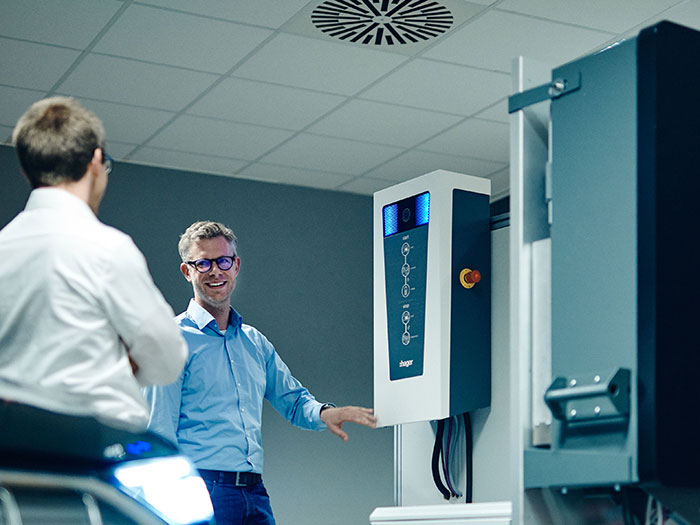E-mobility and the energy transition: the potential of Vehicle-to-Home
Electric cars are a resource not only for mobility, but also for the domestic grid: they can help increase network stability, lower electricity costs, and contribute to climate protection. And, to this end, Audi is participating in an innovative research project on bidirectional charging.
Audi is working towards an ambitious target: making its vehicle fleet CO2-neutral by 2050, in line with the objectives of the Paris Climate Agreement. The brand with the four rings will be launching a wide range of fully electric models over the next five years, as electric cars become an increasingly central part of a broader sustainable mobility offer.
Focus therefore also needs to turn to how electricity is produced: the use of renewable energies is on the rise across Europe, but wind and solar power generation is not always constant. On sunny days or when there are strong winds, there is often a lack of capacity to store the generated energy that the grid cannot use.
The potential of electric cars

This is when electric cars can be useful. As numbers increase, their batteries can also be used as mobile energy storage units. That’s why Audi and the Hager Group, a supplier of equipment and electrical services for residential buildings, have joined forces to develop a solution with economic benefits that also offers greater energy supply security: bidirectional charging.
“Electric mobility is bringing the automotive industry and the energy sector closer together. The battery of an Audi e-tron could supply a single-family home with energy for around one week independently”, explains Martin Dehm, technical project manager for bidirectional charging at Audi. “We want to exploit this potential”.
Vehicle to Home

The idea is simple: the battery of the electric car not only is charged via the wall box at home but can also supply energy back to the house when needed. If the house has a photovoltaic system, the electric car can also serve as a temporary storage medium for the domestically generated electricity.
Bidirectional charging at home – also known as Vehicle to Home (V2H) – has the potential to reduce electricity costs and increase network stability, guaranteeing supply in the event of a blackout.
Careful management
In practice, the system requires a high level of interaction between different technical components, as well as careful management by the tracking software. An Audi e-tron with near-series charging technology operated with a DC wall box with a charging capacity of up to 12 kW was used in the research project.
A 9 kWh extendable home storage unit was also used, although this is not a necessary requirement for bidirectional charging. Thanks to the DC voltage level in the overall grid, the connection between the PV system and the vehicle does not require an inverter.
Savings and safety

Bidirectional charging is particularly useful where home owners have their own photovoltaic system because they can benefit from optimised costs by storing excess electricity. But there are also benefits for customers on variable rates: the electric car can supply energy at times when electricity prices are high, ensuring domestic supply. At night or during cheaper times of the day, the car then uses inexpensive electricity to recharge.
Bidirectional charging also provides other benefits beyond pure cost optimisation. In the event of a blackout, for example, the system can provide the house with energy or even supply a building without a grid connection independently in what is known as stand-alone operation.
Everyday usability
The system’s developers made usability a top priority. “The intelligent charging system manages the battery status, thereby maximising the effectiveness of the overall system. All users have to do is plug in the car, and the rest happens automatically”, says Dehm.
The joint research project has proven two essential things. Firstly, customers who have their own PV system can optimize their mobility in terms of costs and CO2 emissions, taking some of the burden off the grid at the same time – that means customers who own an electric car can make an important contribution to the success of energy transition. Secondly, the intelligent use of the HV battery in the vehicle also opens up the possibility of using an existing resource – previously employed purely for mobility purposes – in a sustainable way.
Source: AUDI AG
